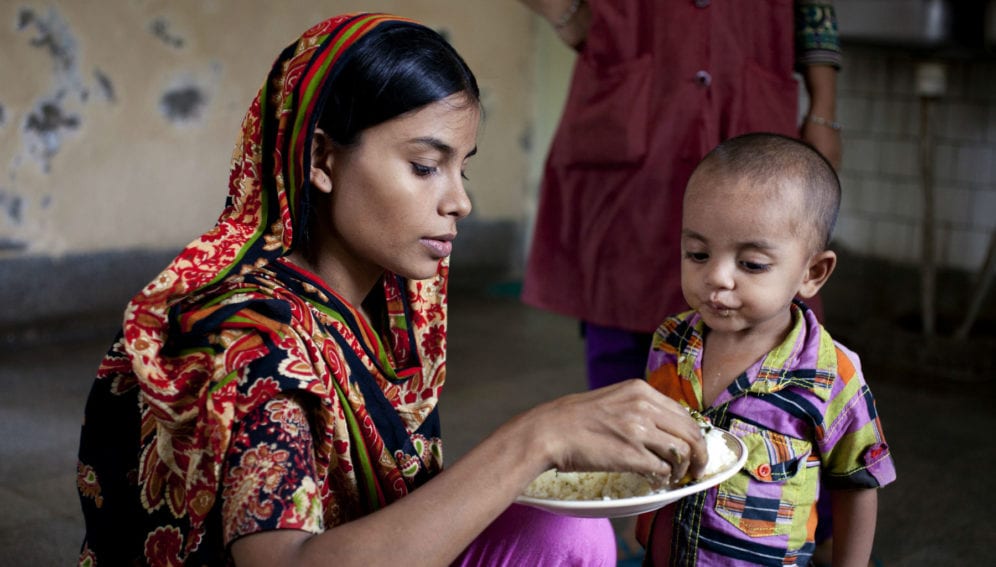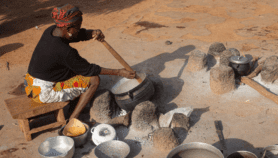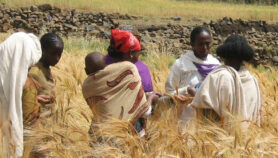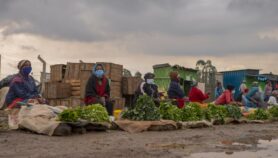By: Anita Makri
Send to a friend
The details you provide on this page will not be used to send unsolicited email, and will not be sold to a 3rd party. See privacy policy.
This article was supported by The Rockefeller Foundation Bellagio Center.
The solutions to under-nutrition lie beyond healthcare, yet policy often doesn’t take this into account, according to Zulfiqar Bhutta, Inaugural Chair in Global Child Health at the Hospital for Sick Children in Toronto, Canada, and founding director of the Center of Excellence in Women and Child Health at Aga Khan University in Karachi, Pakistan.
According to the WHO, almost half a billion people are underweight, and 155 million children were chronically under-nourished in 2016.
As part of the Bellagio Residency 2018 series, Bhutta tells SciDev.Net about the need to more effectively make the link between under-nutrition and issues such as oil prices, agriculture, water shortages, and conflict.
How does under-nutrition link to other parts of the food system, like food prices and agricultural productivity?
At the time of our first Lancet series on nutrition in 2008, this discussion around the [food] ecosystem ‒ agriculture, food systems, food security, dietary diversification ‒ was not very much in the spotlight. But as time has gone on, and as we have seen in many countries where under-nutrition is related to water security, food security, and conflict, these have become quite important. Then in 2013, when Rob Black [professor of international health at the Johns Hopkins Bloomberg School of Public Health] and I worked on the new series during a residency in Bellagio, our focus was very much on health and nutrition, and not enough on nutrition-sensitive sectors.
So this work needs to be done much more effectively ‒ by asking how can governments now, with the sustainable development goals, do a much better job in terms of multi-sector assessment of risks and opportunities?
There needs to be a greater integration with safety nets and agricultural solutions. Evidence is emerging that, unlike previously thought, these are not very expensive alternatives. I think we are now at a much more focused multi-sectoral thinking process than we were 10 years ago.
What’s an example of ‘multi-sectoral thinking’?
In Pakistan, one district has had chronic water and food insecurity, and extreme poverty in a part of the country where malnutrition rates are sky-high – with 80 per cent of children malnourished, and about 50 per cent severely malnourished.
The government is now saying, ‘How can agriculture use alternative thinking around crop irrigation; how can existing poverty alleviation strategies become much more nutrition and food security focused.’ In other places, this is being done through a lot of investment in agriculture sector research, to look at pesticide- and drug-resistant crops, and also financial support systems for farmers that allow them to make better investments.
What other changes in agricultural practice, such as so-called nutrition-sensitive agriculture, can have a direct impact on nutrition?
Obviously small-level home gardening schemes; agriculture schemes that relate to animal husbandry; economic support for villagers to experiment and improve crop quality. Things [like] better water storage systems, bulk purchase of agricultural commodities, better seeds, research for more pest-resistant crops. These are all very much part of the equation. In addition, governments are also beginning to invest in insurance systems, to ensure that farmers have a safety net on crop failures.
But some of this is also related to feudal structures. In many parts of the world, land ownership is largely in the hands of big feudal landowners, and farmers have very little access to the crops or the choice of commodities they can have. This is also a policy imperative that comes into the equation: to ensure adequate land ownership, and the financial means for farmers to make choices.
Is there enough communication between the nutrition sector and the agriculture and food sector?
The answer is a very blunt ‘no’. I wish there could be much more dialogue between people who work on the more proximal solutions ‒ a nutrition product, supplementation strategy, fortification ‒ to bring those solutions a lot closer to the root causes [of undernutrition], especially in the context of sustainable development. There is some dialogue, but it's in academic circles right now, not much [in] the practical planning circles of government.
If that interaction worked better, what would it look like?
I don’t have examples of great success yet ‒ it’s early days. But I think we have examples of multi-sectoral planning, here people from the World Bank, from governments, from the agriculture sector, from the social protection sector and the health and nutritional sector are beginning to sit together. Time will tell exactly how those solutions will be implemented.
But if you go back to countries where nutrition has improved ‒ take the example of Peru or Brazil ‒ you will find that improvements in nutrition may not have been a deliberate multi-sectoral investment to improve nutrition, but to just improve health outcomes or reduce poverty. And all of that had a very synergistic effect on reducing malnutrition.
What about conflict, which the latest world food security report cites as a factor in hunger rising?
There the focus is much more on emergency protection, less so on multi-sectoral planning. Very rarely would you see in conflict situations people focus on sustainable agriculture. Nutritional challenges in conflict situations and in fragile health systems are very complex, and as yet there isn't evidence of successful multi-sectoral planning. But, especially in protracted conflicts, with long-standing insecurities, that is probably the way to go to ensure we have sustainable improvement.
Just look at the face of malnutrition in Yemen. There, to insist on a very integrated multi-sectoral approach is going to be challenging. The focus has got to be to make sure these children don't die. But at the same time, look at the root cause of malnutrition: in Yemen it is man-made. It is the conflict that has put food prices up. So increasingly, in those circumstances, you need to integrate peace-building measures and safety measures for families and communities into nutrition responses.

Zulfiqar Bhutta, Inaugural Chair in Global Child Health at the Hospital for Sick Children in Toronto, Canada, and founding director of the Center of Excellence in Women and Child Health at Aga Khan University in Karachi, Pakistan
This interview has been edited for brevity and clarity.
This article was supported by The Rockefeller Foundation Bellagio Center. For nearly 60 years the Bellagio Center has supported individuals working to improve the lives of poor and vulnerable people globally through its conference and residency programs, and has served as a catalyst for transformative ideas, initiatives, and collaborations.
From November 5 – December 3, 2018, the Bellagio Center hosted a special thematic residency on Science for Development, with a cohort of up to 15 scholars, practitioners, and artists whose work is advancing, informing, communicating, or is inspired by the use or design of science and technology to address social and environmental challenges around the world.














